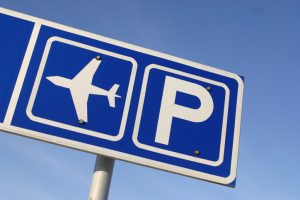 By Tim Maloney
By Tim Maloney
With airports adapting to ride-share disruption with extra fees or complete overhauls of their drop-off and pick-up stations, many have questioned how to get more travelers parking. Their concerns are valid: According to the Worcester Business Journal, Uber and Lyft drivers made 12 million trips to and from Logan International Airport in 2018. Even though ride-share has disrupted the decades-old airport parking ecosystem, driving is still a transportation route many travelers take and parking represents a significant revenue opportunity for airports.
As ride-share popularity grows, so does the cost to the rider. The industry has already seen fee spikes at airports where ride-share is taking over the curb. Those fees are passed onto the passenger and can make the cost of their ride more unpredictable than ever. Between charges and surge pricing during peak hours, unpredictable amounts of money leave the traveler’s pocket and the airport customer experience weakens. Travelers try to pick their driver’s silver sedan out from a sea of identical cars while their post-trip frustration grows.
One way airport customers minimize this frustration is with planning. The end goal is to make it to the gate at the perfect time by controlling as many factors as possible. Travel factors include stops between home and the airport, the accuracy of the driver, and the overall ride-share experience. Parking is a solution to airport travel frustration. By making it easier for travelers to plan their trip in advance and park, we give airport customers control.
Regardless of how the everyday traveler is getting to and from the airport, everything will need a place to park–temporarily while waiting, or for the long-term. Getting ride-share vehicles off the road and into queue lots reduces frustrating congestion around the terminal. In the future, autonomous vehicle fleets will need rest spots while they wait to be summoned. While airport parking adapts to the mobility revolution, integrating our technologies can solve urban congestion.
Driving and parking remain at the root of the industry, regardless of the limitless options travelers are given. Figuring out a way for airports to maximize parking revenue by making it easy for all vehicles, whether personally owned or ride-share, to park and not contribute to congestion is vital. The mobility revolution has created space for technology, integrations, and partnerships
Tim Maloney is director, strategic partnerships with SpotHero.
